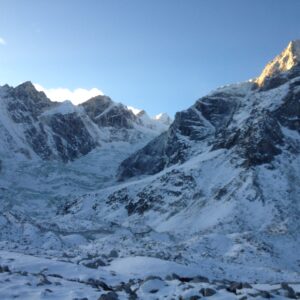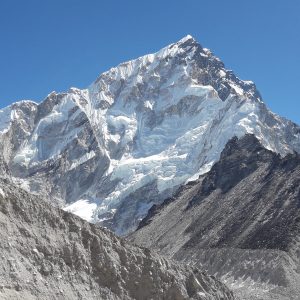
Major Attractions of Lumbini
 25 May, 2019
25 May, 2019
Major Attractions of Lumbini
Lumbini happens to be one of the best places to visit and famous tourist destinations, a Mecca for the devotees and believers all over the world. Lumbini is situated in the Terai belt of the nation, district of Kapilvastu, near the Indian border. Lumbini is the place where Queen Maya Devi gave birth to the baby Buddha, Prince Siddhartha Gautama. A large number of devotees as well as historically inclined tourists visit Nepal every year to witness the birthplace of Buddha, Lumbini.
There are various inscriptions like bricks and other evidence of Lumbini which is the birthplace of Buddha and a place of worship for people from centuries. It was rediscovered by Nepali archaeologists in 1896. The archaeologists also discovered the Ashoka pillar that proves the linkage of Lumbini with Buddha.
UNESCO enlisted Lumbini as a world heritage site due to its large importance to the Hindu people and Buddhist religious community, along with the history and culture of the entire world. Some of the major attractions of Lumbini are as follows:
1. Maya Devi Temple
The Maya Devi temple of Lumbini is one of the beautiful and major attractions. It is the most noted and important temple of the premises, enshrining the traditional location of the birth of Gautama Buddha. The Maya Devi temple is a white building that is protecting the exact spot of the birth of Buddha, denoted by the marker stone.
It is known as the most sacred pilgrimage for the Buddhist people. The temple is named after Queen Maya Devi. Nowadays, the Maya Devi temple is making it to the list of every traveler. To enter the Maya Devi temple requires tickets. Maya Devi temple is a must-visit place.
2. Ashoka Pillar
It is believed that the Ashoka Pillar was built during 249 BC, when the Emperor of India, Ashoka, visited the then beautiful village of Lumbini. It is known that Emperor Ashoka often visited Lumbini. It is one of many pillars built during the reign of Ashoka. It is also one of the oldest inscriptions found in Nepal. As there is controversy surrounding the birthplace of Buddha, the Ashoka Pillar is strong and clear evidence.
It openly proves that Buddha was born in Lumbini, Nepal. The inscription engraved by Ashoka is still intact and testifies to the authenticity of the birthplace. The text that is written in the Brahmi script records the visit of King Priyadarsi, who ordered structures to be built that help protect the site.
3. Nativity Sculpture
The Nativity sculpture is the beautiful shrine of Queen Devi that shows Maya Devi grasping the branch of the sale tree with her right hand for support. This is one of the interesting sculptures in Lumbini that everyone wants to see. In the sculpture, you will see Gautami Prajapati, the sister of Maya Devi, standing next to her in a supporting posture during the time of delivery. This whole stone carving reflects the traditional childbearing style, as there were no hospitals and modern equipment in the past.
On the right side, there is the figure of Brahma and Indra, wearing conical crowns, standing before the queen in devotion to receive the divine child, as narrated by Buddhist literature. At the bottom of the panel, a newly born child, Prince Siddhartha Gautama, is standing upright on a lotus pedestal with two celestial figures receiving him.
This monastic site is the sacred spot of the birth of Buddha. This birth spot has become the holiest point in the whole of the holy land of Lumbini and has drawn the attention of many generous devotees who erected this structure to pay homage. The birth spot of Buddha is the most famous in Lumbini.
4. Pushkarini
Pushkarini is the holy pond of Lumbini. It is believed that Maya Devi bathed here before giving birth to little Buddha. It is the most sacred pond of the Shakyas family. It is also the same pond where the infant Buddha was given his first purification bath after birth. The pond has two deep well-terraced steps that are beautifully layered with bricks.
5. International Monasteries
In Lumbini, you will see 25 different countries have constructed beautiful international monasteries. Some of them are described below:
- Royal Thai Monastery: It is an imposing and stunning wat-style monastery in Lumbini that is dedicated to Buddhism. This gleaming building is constructed from white marble and has a blue-roofed meditation center. This temple has a beautiful design and carvings on its walls, making it one of the most visited sites.
- Cambodian Monastery: This is one of the most fascinating temples in the region, with a colorful fantasy and spiritual ambiance. This monastery is very beautifully designed, and its outer wall is covered with intricate designs.
- Dharma Swami Maharaja Buddha Vihar: This is the place where all the monks residing there meditate, as this site has immense peace. Tara Pooja is performed every day by the 600 monks of this monastery.
- Myanmar Golden Temple: This is the oldest structure in the city of Lumbini. The temple is dedicated to Lord Buddha and is built in the Burmese style of architecture. It is golden-colored with an impressive corncob-shaped shikhara.
- China Temple: The China Temple is an elegant Buddhist Monastery in Lumbini. This temple has an impressive structure with pagoda-style architecture, resembling the look of a Chinese city.
- Korean Temple: This is also a Buddhist Monastery in Lumbini. Built in the Korean style of architecture, it looks very impressive. The temple is huge, oriental, and also offers accommodation to visitors for a few days.
- Sri Lankan Monastery: This grand Monastery holds religious importance, especially for those who follow Buddhism in Sri Lanka. It is a beautifully constructed temple with pagoda style, featuring a golden idol of Lord Buddha seated in a meditative posture underneath the pagoda.
6. Tilaurakot
Tilaurakot is one of the famous spots in Lumbini. It is about 10 km northwest of Taulihawa. There is a rectangular fortified area that is popularly known as Tilaurakot. It is believed that Gautama Buddha was raised and spent his princely life in Tilaurakot until the age of 29. Tilaurakot is automatically associated with Lord Gautama Buddha. A short distance from Tilaurakot, there is a small museum that displays coins, black polished pottery, jewelry, as well as a variety of ornaments and toys recovered from the site.
All of these interesting items are dated back to the period between the fourth century BC and seventh century BC. This place is now only a plotted area of what used to be a large city. The region is surrounded by lush green meadows and provides a pleasant respite for those who want to explore. With the long holy history and spiritual significance of the area, Tilaurakot is one of the places worth visiting for travelers in Lumbini, Nepal.
7. World Peace Pagoda
World Peace Pagoda is one of the major attractions of Lumbini. Situated at the birthplace of Gautama Buddha, it is known as “Bishwa Shanti Stupa” in Nepali. If you do not like crowds and pollution and want to spend time in a peaceful place, then the World Peace Pagoda is perfect for you. It is a white stupa designed in pagoda style and is a truly attractive sight. It is one of the favorite destinations for tourists.
World Peace Pagoda is one of the world’s greatest stupas, constructed by Japanese Buddhists when a peace council was held. Every shining statue of the stupa depicts the Buddha in the posture he assumed when he was born. Near the base of the stupa, there is a grave of a Japanese monk murdered by anti-Buddhist forces during the construction of the monument. The Peace Pagoda is enveloped by beautiful greenery and is a striking sight on a very pleasant day under the clear blue sky of Lumbini.
8. Lumbini Museum
Situated in the cultural zone in Lumbini, this museum is a one-stop spot for everything ranging from daily-use crafts to stamps that are directly related to Lumbini or Buddha. It is a uniquely styled museum where visitors can gain a lot of knowledge about the history of Lumbini. This beautiful Lumbini Museum, located on the northern end of the premises, is dedicated to the life of Gautama Buddha.
This museum is the perfect way to conclude a journey of understanding Lumbini, where you can find all the interesting history and culture dating back to the fourth century AD. There is also the Lumbini International Research Institute, located right opposite the museum, which offers a chance to study and research religions in general.
Major attractions of Lumbini include numerous architectural designs of different monasteries, famous landmarks associated with Lord Buddha, including the Maya Devi temple, Ashoka Pillar, and sacred ponds.





